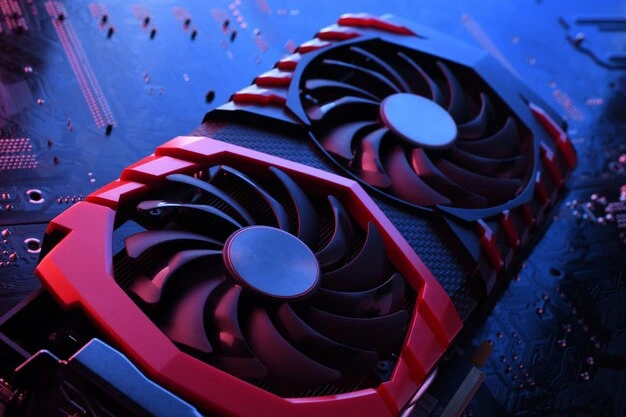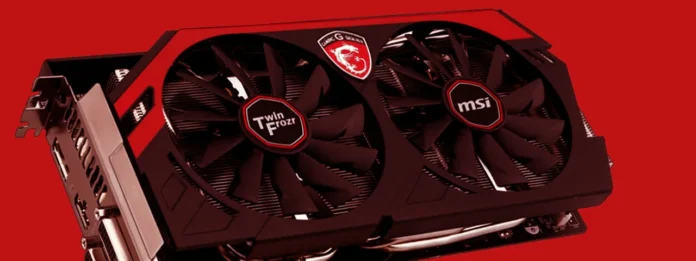If you’re looking for a graphics card that delivers modern features at an affordable price, the AMD Radeon R9 285 might be the one for you.
This graphics card was released in 2014 and offers support for new features such as TrueAudio and bridgeless CrossFire.
If you’re in the market for a new graphics card and want to get the most bang for your buck, read out our review of AMD Radeon R9 285 to find out if it’s worth considering.
AMD Radeon R9 285: Specifications
| Specifications | |
| GPU Codename | Tonga Pro |
| Stream Processors | 1792 |
| Texture Units | 112 |
| ROP Units | 32 |
| Core Clock | 918 MHz (base) – 965 MHz (boost) |
| Memory | 2GB GDDR5 |
| Memory Clock | 1375 MHz (5.5 Gbps effective) |
| Memory Interface | 256-bit |
| Memory Bandwidth | 176 GB/s |
| DirectX Support | DirectX 12 |
| OpenGL Support | OpenGL 4.4 |
| OpenCL Support | OpenCL 2.0 |
| TDP (Thermal Design Power) | Approximately 190W |
| Power Connectors | 1x 6-pin |
| Display Outputs | 2x DVI, 1x HDMI 1.4a, 1x DisplayPort 1.2 |
| Max Resolution | 4096×2160 (HDMI/DisplayPort), 2560×1600 (DVI) |
| CrossFire Support | Yes, up to 4-way CrossFire |
| Cooling | Dual-slot, dual-fan cooler design |
| Form Factor | PCIe 3.0 x16 |
| Supported Technologies | AMD FreeSync, AMD TrueAudio, Mantle API |
| Compatibility | Windows 7 and later, Linux |
Performance Analysis
Gaming Performance

The AMD Radeon R9 285 delivers solid gaming performance, especially for its price point.
In benchmark tests, it performs similarly to the previous generation Radeon R9 280, but with a few key improvements such as support for TrueAudio and bridgeless CrossFire.
It also has lower power usage and improved performance-per-watt compared to its predecessor.
In terms of specific games, the R9 285 performs well in most titles, with smooth gameplay and high frame rates.
It can handle newer games such as Shadow of the Tomb Raider and Assassin’s Creed Odyssey at 1080p resolution with high settings.
However, it may struggle with more demanding games at higher resolutions or with maxed-out settings.
Thermal Performance
The thermal performance of the AMD Radeon R9 285 is solid, with most models featuring dual-fan cooling solutions that keep the card at reasonable temperatures.
In benchmark tests, the card typically stays between 80° – 90C, even under heavy load.
Moreover, some models may have louder fans or higher temperatures than others, so it’s important to research specific models before purchasing.
Power Consumption
Compared to its predecessor, the R9 285 has lower power consumption and improved performance-per-watt.
It typically consumes around 190 watts under heavy load, which is relatively low for a high-end graphics card.
However, it’s important to note that power consumption may vary depending on the specific model and how it’s used. Overclocking the card may also increase power consumption to 500 Watts.
Software and Features
AMD Catalyst Control Center
The AMD Catalyst Control Center is a software suite that allows you to configure and customize your AMD Radeon graphics card.
It provides a user-friendly interface that enables you to adjust settings for display, video, and 3D applications.
You can also use it to monitor your GPU’s performance, temperature, and fan speed.
Some of the features available in the AMD Catalyst Control Center include:
Overdrive: This feature allows you to adjust the clock speeds and voltage of your GPU to achieve higher performance.
You should be careful when using this feature as it can cause your GPU to overheat or become unstable.
Video: You can use this feature to adjust the color, brightness, and contrast of your display.
You can also enable features such as noise reduction and deinterlacing to improve the quality of your video playback.
AMD Eyefinity Technology
AMD Eyefinity Technology is a feature that allows you to connect multiple displays to your AMD Radeon R9 285 graphics card and create a single large display.
This feature is useful for gamers and professionals who need a large workspace.
With Eyefinity, you can have a more immersive gaming experience or increase your productivity by having multiple windows open simultaneously.
The AMD Radeon R9 285 supports up to three displays using Eyefinity. You can use it to create a resolution of up to 7680×1080 (3x 2560×1080) or 5760×1200 (3x 1920×1200).
To use Eyefinity, you need to have compatible displays and cables. You also need to configure the displays in the AMD Catalyst Control Center.
R9 285 Comparison with Competing Models
Nvidia GeForce GTX 960
The Nvidia GeForce GTX 960 is a graphics card that was released around the same time as the AMD Radeon R9 285.
It is based on Nvidia’s Maxwell architecture and has 3 GB of GDDR5 memory.
In terms of performance, the GTX 960 is slightly faster than the R9 285 in most games, but the difference is not significant.
The GTX 960 also has lower power consumption and produces less heat than the R9 285.
AMD Radeon R9 M380
The AMD Radeon R9 M380 is a graphics card that was released in 2015. It is based on AMD’s Tonga architecture and features 5 GB of GDDR5 memory.
In terms of performance, the R9 M380 is generally considered to be a mid-range graphics card.
Compared to the R9 285, the R9 M380 tends to be slightly slower in most games.
However, it’s important to note that the R9 285 is a desktop graphics card, whereas the R9 M380 is a mobile variant designed for laptops.
AMD Radeon R9 285 Price
The AMD Radeon R9 285 is priced at $249. You can buy it from any online store like eBay, Amazon, etc.
Pros and Cons
Pros
- DirectX 12 Support
- FreeSync Support
- Energy Efficiency
- 256-bit Memory Interface
Cons
- Outdated Architecture
- Availability and Support
Conclusion
You have learned about the AMD Radeon R9 285, a mid-range GPU that was released in 2014. This GPU was designed to provide modern features at an affordable price point.
During our review, we found that the Radeon R9 285 performed on par with the Radeon R9 M380 and had lower power usage, resulting in improved performance-per-watt.
The card also introduced new features like TrueAudio and bridgeless CrossFire.
However, the Radeon R9 285 was not without its drawbacks. The card had lower raw memory bandwidth compared to its competitors, which could impact performance in some scenarios.
Frequently Asked Questions
Is the AMD Radeon R9 285 good for gaming?
Yes, the AMD Radeon R9 285 is a great graphics card for gaming.
It has 1792 stream processors, 112 TMUs, and 32 ROPs, which allows it to handle most modern games with ease.
It also supports modern features such as TrueAudio and FreeSync, which can enhance your gaming experience.
Is R9 better than RX?
It depends on the specific models you are comparing. Generally, the RX series is newer and more powerful than the R9 series.
Some R9 models may still perform better than certain RX models. It’s best to compare the specific models you are interested in before deciding.
How much power does an R9 285 need?
The AMD Radeon R9 285 has a TDP (thermal design power) of 190 watts. This means that it requires a power supply with at least 500 watts of power to operate properly.
it is recommended that you use a power supply with an 8-pin and 6-pin PCIe power connector to ensure stable performance.



